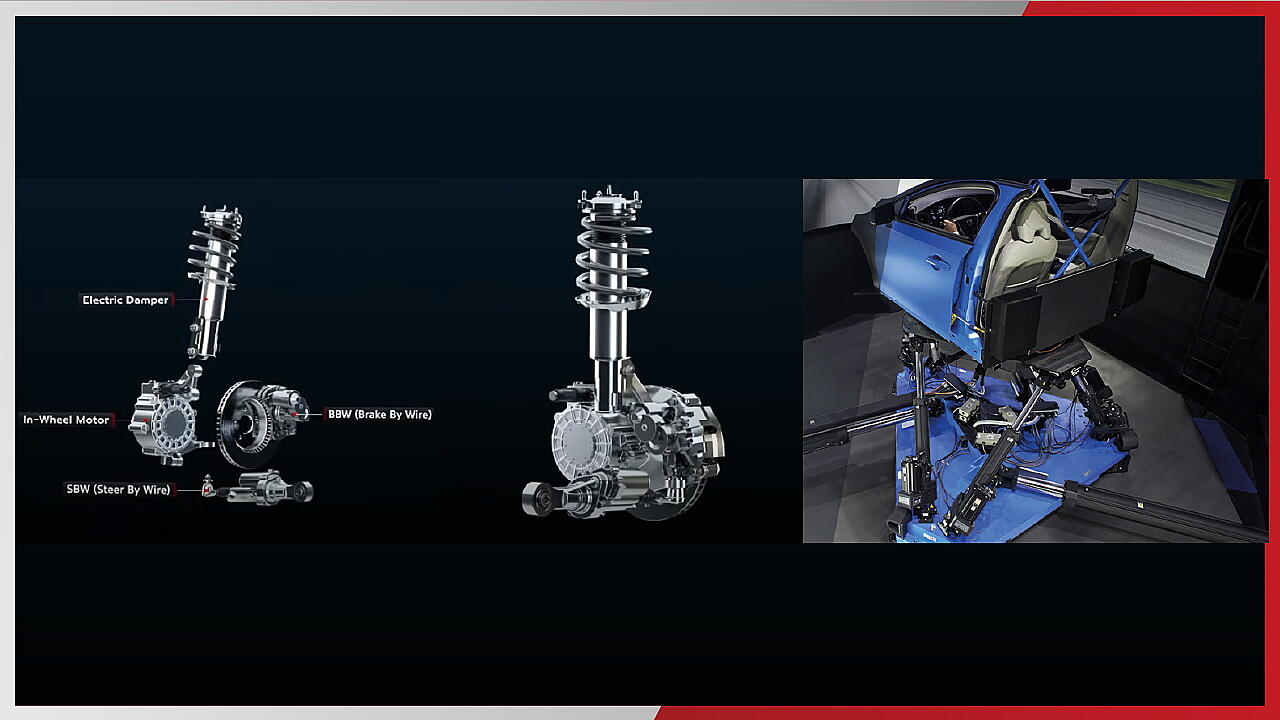
In the quest to advance automotive safety and performance, the Centre for Automotive Advanced Research (CAAR) at IIT Madras is pushing the boundaries of digital simulation, design and testing. As the automotive world shifts gears towards innovation, CAAR is leading the charge, collaborating with OEMs, component manufacturers, and research institutes to redefine testing protocols, enhance vehicle dynamics, and create meaningful safety metrics for two-wheelers.
Speaking to Mobility Outlook, Dr N Karuppaiah, Senior Project Advisor, CAAR, provided insight into the centre's initiatives on Vehicle Dynamics aimed at optimising testing while reducing costs and development times.
Simulating Safer Roads Virtually
According to Dr Karuppaiah, the major focus at CAAR is digital simulation—an emerging technology that holds the potential to drastically transform vehicle development. 'We’re collaborating with several OEMs and component manufacturers to leverage digital simulation,' he said adding that one critical area is two-wheeler stability testing, which has been traditionally conducted on high-speed test tracks, posing safety risks and limitations.
To address this, CAAR has planned a project focused on the digital simulation of two-wheeler high-speed stability. “This shift from physical to digital not only mitigates the risks associated with real-world testing but also allows for more precise analysis of vehicle dynamics in a controlled environment,” he said.

By simulating different road conditions, CAAR aims to identify potential hazards before they manifest in reality. This is just one of the many steps toward establishing competence in delivering quality engineering solutions.
Modular Approach To Vehicle Dynamics
Digital simulation at CAAR extends beyond basic software application. The centre is also developing in-house mathematical models that serve as cost-effective, flexible solutions for vehicle dynamics. 'We are working to create building blocks for various vehicle systems like suspension, brakes and steering,' explains Dr Karuppaiah. These blocks are essential to understanding and enhancing the dynamic performance of vehicles, including agility, comfort, and safety.
While commercial software offers off-the-shelf solutions, CAAR’s approach emphasises low-cost, tailor-made models that can be customised to specific requirements. This dual approach—using existing commercial software while simultaneously developing proprietary modules—ensures CAAR’s research is not only comprehensive but also accessible to a broader range of manufacturers and applications, he mentioned.
Optimising Suspension Tuning
Suspension systems play a pivotal role in determining vehicle performance. From ride comfort to handling characteristics, the quality of suspension impacts every facet of driving. CAAR is currently engaged in a project with a major OEM to optimise ride comfort in trucks. The project aims to tune and refine the suspension system through mathematical modeling and simulations for optimum performance., he said.
CAAR’s initiative extends to damper optimisation, another key component of suspension system. By developing models to predict damping performance under various velocities, it can fine-tune the damper to deliver optimal performance. Variables like shim thickness / diameter, spring thickness, and port dimensions are adjusted iteratively to achieve the desired outcome. Such advancements “lay the foundation for future innovations like semi-active dampers, which offer variable dampening through mechatronics,” he explained.
Zero Prototyping
One of CAAR’s most ambitious projects is setting up a driving simulator that can achieve 'zero prototyping. This technology integrates software-in-the-loop, hardware-in-the-loop, driver-in-the-loop, and environment-in-the-loop, creating a comprehensive virtual environment. This approach allows for multiple design iterations in a simulated setting, significantly reducing the number of physical prototypes needed,” he mentioned.
'The driving simulator offers a complete immersive experience, replicating real-world conditions,' noted Dr Karuppaiah. Whether it’s undulated roads, sudden manoeuvres, or varying weather conditions, the simulator allows engineers to optimise design before physical testing begins. This not only cuts costs but also shortens development time, making it a game-changer for the industry.
Two-Wheeler Safety Metrics
With India accounting for over 11% of global road fatalities and about half of these involving two-wheelers, CAAR is developing a safety metric tailored for two-wheelers. Unlike four-wheelers, which have established safety benchmarks, two-wheelers lack a comprehensive safety framework. “CAAR’s new metric aims to fill this gap, providing a benchmark for manufacturers while also offering technologies to improve these metrics,” he said.
By collecting extensive data from real-world scenarios, correlating it with design parameters, and running numerical simulations, it hopes to enhance safety standards for two-wheelers. Collaborations with testing centres like NATRAX / ARAI will further enrich the data pool, allowing for virtual simulations that can replicate real-world challenges.

Data-Driven Insights
Dr Karuppaiah said, in addition to safety, CAAR is focusing on vehicle dynamics specifically in the context of lightweight materials and alternative designs. 'Many systems in a vehicle interact with each other, making it challenging to capture the overall effect of optimization,' he explained. By refining digital models and integrating extensive data, CAAR’s simulations can evaluate numerous material combinations and configurations, he added.
These simulations are not limited to conventional vehicles; they also encompass new technologies like e-corner modules, which enable steer-by-wire, brake-by-wire, and drive-by-wire systems. The potential for these technologies to redefine vehicle architecture is immense, and CAAR aims to be at the forefront of this transformation, he reiterated.
Integrating Men & Machine
Advanced Driver Assistance Systems (ADAS) represent the cutting edge of automotive safety. CAAR is exploring ways to simulate ADAS performance using the driving simulator, which provides a comprehensive digital environment for evaluating driver assistance technologies. The simulator enables subjective assessments, allowing drivers to experience various scenarios, from acceleration to braking and lane-keeping, all within a controlled virtual environment.
The goal is to optimise ADAS systems without excessive prototyping, reducing both costs and development time. By incorporating driver input and environmental factors into the loop, CAAR’s approach promises to enhance the real-world applicability of ADAS technologies especially in the Indian context.
The Road Ahead
As CAAR continues to pioneer automotive testing and research, its focus remains on delivering practical, cost-effective solutions that push the boundaries of innovation. Whether it’s reducing the testing time from six months to a few weeks, or integrating complex safety and performance enhancement systems, it has an ambitious plan to contribute to shaping the future of the automotive industry.
By addressing some of the most pressing challenges in vehicle development, CAAR not only aims to enhance safety and performance but also to position India as a hub for cutting-edge automotive research. As the industry evolves, CAAR’s efforts are set to drive the next wave of innovation, making vehicles safer, more efficient, and truly world-class.
Also Read:
CAAR Aims Elevate India’s Automotive R&D To Global Excellence: Thiru Srinivasan

